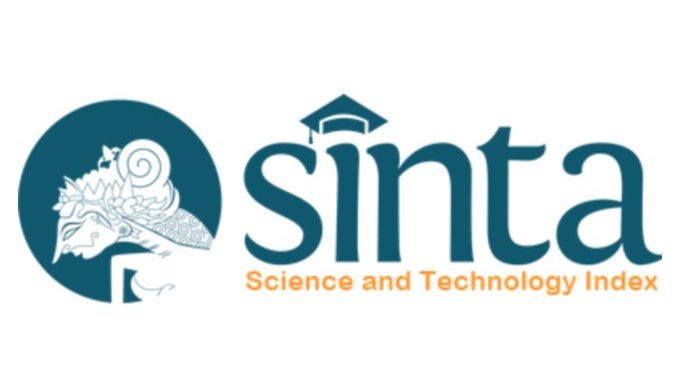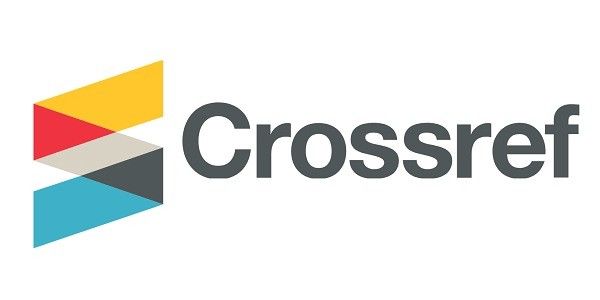Karakteristik Pasien Stroke Usia Muda di RSUD Kota Surakarta
DOI:
https://doi.org/10.55175/cdk.v46i3.490Keywords:
Insidens, stroke, usia mudaAbstract
Latar belakang. Kejadian stroke pada usia muda kurang dari 5% dari seluruh kejadian stroke. Beberapa penelitian melaporkan peningkatan angka kejadian stroke pada usia kurang dari 45 tahun. Penelitian ini untuk mengetahui angka kejadian dan karakteristik pasien stroke usia muda di RSUD Kota Surakarta. Metode. Penelitian deskriptif observatif pada populasi semua penderita stroke usia muda (18-45 tahun) di RSUD Kota Surakarta dari bulan Januari 2017 hingga Juni 2018. Data diambil dari rekam medis berupa usia, jenis kelamin, jenis stroke, hasil CT scan, serta faktor risiko. Hasil. Dari 420 pasien stroke pada rentang waktu Januari 2017-Juni 2018, didapatkan 28 penderita stroke usia muda, rerata usia 39,6 tahun dengan rentang usia 29 sampai 45 tahun, dengan 53,6% laki-laki, 78,6% menderita stroke non-hemoragik, dan 39,3% menderita kelemahan sisi kanan. Didapatkan riwayat hipertensi sebanyak 85,7%, diabetes melitus 14,3%, hiperkolesterolemia 17,9%, hiperurisemia 21,4%, gagal jantung 7,1%, epilepsi 7,1%, dan riwayat stroke 3,6%. Tidak ada yang mempunyai riwayat penyakit jantung koroner dan aritmia jantung. simpulan. Stroke usia muda jarang terjadi, dan sebagian besar merupakan stroke non-hemoragik. Hipertensi dan dislipidemia merupakan faktor risiko utama stroke di usia muda.
Introduction. Stroke in young adults is less than 5% of all incidence of stroke; but it is increasing among less than 45 years old. The purpose of this study was to determine the incidence and characteristics of young stroke patients in RSUD Kota Surakarta. Method. A descriptive analytic study on all stroke patients aged between 18-45 years in RSUD Kota Surakarta during January 2017 to June 2018. Data was collected from medical record consist of age, gender, type of stroke, CT scan data, and risk factors. result. From 420 stroke patients in the period of January 2017-June 2018, there were 28 young stroke patients in the range of 29 to 45 years old, the average was 39.6 years old; 53.6% were male and 78.6% suffered a non-hemorrhagic stroke, 39.3% had right hemiparesis. Hypertension was found in 85.7%, diabetes mellitus in 14.3%, dyslipidemia in 17.9%, high uric acid in 21.4%, heart failure in 7.1%, epilepsy in 7.1%, and previous stroke history in 3.6% patients. No patients has a history of coronary heart disease and cardiac arrhythmias. conclusion.The young adults stroke incidence is low. Ischemic stroke is the most common type. Hypertension and dyslipidemia are the most common found stroke risk factors
Downloads
References
Smajlović D. Strokes in young adults: Epidemiology and prevention. Vasc Health Risk Manag. 2015;11:157–64
Marini C, Russo T, Felzani G. Incidence of stroke in young adults: A review. Stroke Res Treat. 2011;2011:535-672
Singhal AB, Biller J, Elkind MS, Fullerton HJ, Jauch EC, Kittner SJ, et al. Recognition and management of stroke in young adults and adolescents. Neurology 2013; 81(12):1089–97
Griffiths D, Sturm J. Epidemiology and etiology of young stroke. Stroke Res Treat. 2011; 2011:209-370
Kim DY, Jung YH, Saposnik G. Traditional risk factors for stroke in East Asia. J Stroke. 2016;18(3):273–85
Sukmawati R, Nuryani, Purwanto H, Yahya I, Lestari A. Pengenalan pola aritmia kontraksi ventrikel dini pada elektrokardiogram dengan jaringan syaraf tiruan menggunakan fitur interval RR, gradien gelombang R, dan QR. J Teori dan Aplikasi Fisika 2014;2(2):157-63
Yancy CW, Jessup M, Bozkurt B, Butler J, Casey DE Jr, Drazner MH, et al. 2013 ACCF/AHA guideline for the management of heart failure: executive summary: A report of the American College of Cardiology Foundation/American Heart Association Task Force on practice guidelines. Circulation. 2013;128(16):1810-52
Scheffer IE, Berkovic S, Capovilla G, Connolly MB, French J,Guilhoto L, et al. ILAE classification of the epilepsies: Position paper of the ILAE Commission for Classification and Terminology. Epilepsia. 2017;58(4):512-21
Tatlisumak T, Cucchiara B, Kuroda S, Kasner SE, Putaala J. Nontraumatic intracerebral haemorrhage in young adults. Nat Rev Neurol. 2018;14: 237-50
Chraa M, Louhab N, Kissani N. Stroke in young adults: About 128 cases. Pan Afr Med J. 2014;17:37
Alchuriyah S, Wahjuni CU. The factors that affect stroke at young age in Brawijaya Hospital Surabaya. J Berkala Epidemiol. 2016;4(1):62–73
Roy-O’Reilly M, McCullough LD. Sex differences in stroke: The contribution of coagulation. Exp Neurol. 2014;259:16-27
Hedna VS, Bodht AN, Ansari S, Falchook AD, Stead A, Heilman K, et al. Hemispheric differences in ischemic stroke: Is left-hemisphere stroke more common? J Clin Neurol. 2013;9:97-102
Naess H, Waje-Andreassen U, Thomassen L, Myhr KM. High incidence of infarction in the left cerebral hemisphere among young adults. J Stroke Cerebrovasc Dis. 2006;15:241-4
Tariq M, Ishtiaq S, Zulfiqar SO. Hemispheric distribution of middle cerebral artery ischemic strokes in patients admitted to military Hospital Rawalpindi. Pak Armed Forces Med J. 2016;66(4):498-501
Hernandez SAR, Kroon AA, van Boxtel MPJ, Mess WH, Lodder J Jolles J, et al. Is there a side predilection for cerebrovascular disease? Hypertension. 2003;42:56-60
Putaala J, Metso AJ, Metso TM, Konkola N, Kraemer Y, Haapaniemi E, et al. Analysis of 1008 consecutive patients aged 15 to 49 with first-ever ischemic stroke: the Helsinki young stroke registry. Stroke 2009;40(4):1195-203
Dash D, Bhashin A, Pandit AK, Tripathi M, Bhatia R, Prasad K, et al. Risk factors and etiologies of ischemic strokes in young patients: A tertiary hospital study in North India. J Stroke. 2014;16(3):173-7
Schneider S, Kornejeva A, Vibo R, Janika Kõrv J. Risk factors and etiology of young ischemic stroke patients in Estonia. Stroke Res Treat. 2017; 1-7
Chen X, Zhou L, Zhang Y, Yi D, Liu L, Rao W, et al. Risk factors of stroke in Western and Asian countries: A systematic review and meta-analysis of prospective cohort studies. BMC Public Health. 2014;14:776
Hisham NF, Bayraktutan U. Epidemiology, pathophysiology, and treatment of hypertension in ischaemic stroke patients. J Stroke Cerebrovasc Dis. 2013;22(7):4-14
Feldmann E, Broderick JP, Kernan WN, Viscoli CM, Brass LM, Brott T, et al. Major risk factors for intracerebral hemorrhage in the young are modifiable. Stroke. 2005;36(9):1881-5
Cleary P, Shorvon S, Tallis R. Late-onset seizures as a predictor of subsequent stroke. Lancet. 2004;363(9416):1184-6
Li M, Hou W, Zhang X, Hu L, Tang Z. Hyperuricemia and risk of stroke: A systematic review and meta-analysis of prospective studies. Atherosclerosis. 2014;232(2):265-70
Downloads
Published
How to Cite
Issue
Section
License
Copyright (c) 2019 https://creativecommons.org/licenses/by-nc/4.0/

This work is licensed under a Creative Commons Attribution-NonCommercial 4.0 International License.





















